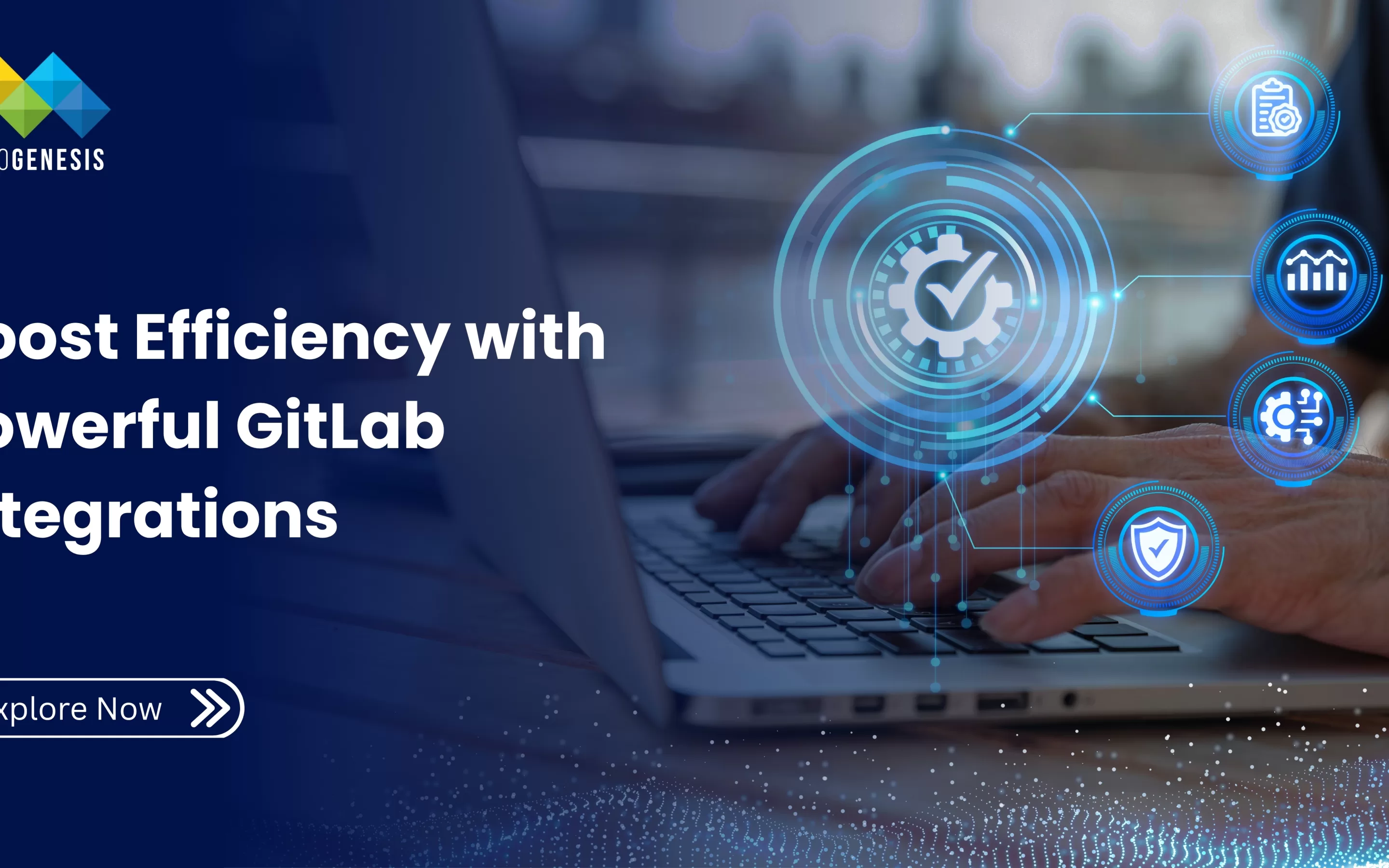Modern application development is evolving rapidly. The demand for faster releases, flexible scaling, and minimal infrastructure management has led organizations to embrace DevOps practices and serverless computing.
Both are powerful paradigms on their own—but when combined, serverless architectures and DevOps create a streamlined development-to-deployment pipeline. This combination enables teams to deliver scalable, event-driven applications quickly and efficiently, while reducing operational burdens.
In this blog, we’ll explore how serverless computing complements DevOps, the benefits and challenges of this approach, and best practices for implementing serverless DevOps workflows.
What Is Serverless Architecture?
Contrary to its name, serverless doesn’t mean “no servers.” It means developers don’t manage servers directly. With serverless, cloud providers handle infrastructure, provisioning, and scaling.
Popular serverless platforms include:
- AWS Lambda
- Azure Functions
- Google Cloud Functions
- Cloudflare Workers
Key Characteristics:
- Event-driven: Functions are triggered by events (HTTP requests, file uploads, DB changes).
- Auto-scaling: Resources scale automatically based on demand.
- No infrastructure management: Developers focus purely on code.
- Pay-as-you-go pricing: Costs are based on execution time and usage, not idle capacity.
What Is DevOps?
DevOps is a set of practices and cultural principles that aim to shorten the software development lifecycle and deliver high-quality software continuously.
DevOps Core Principles:
- Continuous Integration (CI): Automated testing and code merging.
- Continuous Delivery (CD): Automated deployment pipelines.
- Infrastructure as Code (IaC): Automating infrastructure provisioning.
- Monitoring and Logging: Real-time feedback for operational health.
- Collaboration: Developers and operations teams working as one.
How Serverless Enhances DevOps
Serverless architecture complements DevOps by aligning with its goals—automation, agility, scalability, and reduced manual overhead.
1. Faster Time to Market
Serverless allows developers to focus on functionality rather than managing servers or containers. With DevOps practices like CI/CD, teams can deploy updates in minutes.
- Example: A team using AWS Lambda with GitHub Actions can push code updates to production automatically after successful tests.
2. Smaller, Deployable Units
Serverless encourages breaking applications into small, independent functions (microservices). These can be developed, tested, and deployed individually—ideal for DevOps pipelines.
3. Reduced Infrastructure Overhead
DevOps teams often spend time configuring VMs, containers, and auto-scaling rules. Serverless removes this complexity—no patching, provisioning, or manual scaling needed.
4. Built-in Scalability
DevOps aims to ensure applications scale reliably. Serverless platforms auto-scale functions based on demand—no manual tuning required.
5. Integrated Monitoring and Logging
Serverless platforms come with built-in observability tools. AWS CloudWatch, Azure Monitor, and GCP Stackdriver provide logs, metrics, and tracing out of the box.
Serverless DevOps Pipeline: Step-by-Step
A DevOps workflow for serverless applications may look like this:
1. Code Development
- Functions written in Node.js, Python, Go, or Java
- Version-controlled using Git
2. CI/CD Integration
- Trigger pipelines on every commit
- Run unit and integration tests
- Package and deploy functions automatically (e.g., via Serverless Framework or AWS SAM)
3. Infrastructure as Code
- Define API Gateways, IAM roles, databases using tools like Terraform, AWS CDK, or CloudFormation
- Maintain all configurations in version control
4. Deployment
- Use blue/green or canary deployments for safe rollouts
- Validate in staging before production push
5. Monitoring and Alerts
- Set up dashboards for cold starts, execution times, error rates
- Use alerting systems (PagerDuty, Slack, SNS) for anomalies
Popular Tools for Serverless DevOps
| Category | Tools |
| CI/CD | GitHub Actions, GitLab CI, Bitbucket Pipelines, CircleCI |
| IaC | Terraform, AWS SAM, Serverless Framework, AWS CDK |
| Monitoring | CloudWatch, Azure Monitor, New Relic, Datadog |
| API Management | API Gateway, Azure API Management, Kong |
| Logging | AWS CloudTrail, GCP Stackdriver, ELK Stack |
Benefits of Serverless DevOps
✅ 1. Simplified Deployment
CI/CD pipelines deploy small units of code rapidly with fewer dependencies and infrastructure concerns.
✅ 2. Reduced Costs
Pay only when functions are executed—perfect for variable workloads or startups.
✅ 3. Built-in Fault Tolerance
Serverless platforms have automatic retries, regional failover, and managed availability.
✅ 4. Effortless Scaling
Functions scale in response to events automatically—ideal for unpredictable workloads.
✅ 5. Speed and Agility
Smaller teams can release updates more frequently, reducing time-to-market dramatically.
Challenges of Serverless DevOps (and How to Overcome Them)
While powerful, serverless + DevOps integration comes with its own set of hurdles.
❌ 1. Cold Starts
Functions may take longer to execute when idle for too long.
Solution: Use provisioned concurrency or lightweight runtimes (e.g., Node.js).
❌ 2. Debugging Complexity
Tracing across functions and services is harder in serverless due to stateless nature.
Solution: Use distributed tracing tools (e.g., AWS X-Ray, OpenTelemetry).
❌ 3. Vendor Lock-In
Serverless apps often rely on proprietary services (e.g., AWS DynamoDB, Step Functions).
Solution: Abstract logic using frameworks and maintain portability best practices.
❌ 4. Local Development Difficulties
Testing serverless functions locally can be tricky.
Solution: Use emulators like serverless-offline, AWS SAM CLI, or LocalStack for local testing.
❌ 5. Limited Execution Time
Most providers limit function runtime (e.g., 15 min in AWS Lambda).
Solution: Use functions for short tasks; offload long jobs to workflows or containers.
Read more: How DevOps Automates Processes in Software Development
Use Cases for Serverless + DevOps
| Use Case | Description |
| API Backends | Functions exposed via API Gateway for scalable endpoints |
| Event Processing | Real-time log ingestion, notifications, email pipelines |
| Data Pipelines | Serverless ETL tasks to transform and store data |
| CI/CD Orchestration | Automate builds, tests, and deployments using cloud functions |
| Chatbots & Automation | Build bots that scale per user interaction |
Best Practices for Serverless DevOps Success
- Adopt IaC Early: Automate all infrastructure using version-controlled templates
- Use Feature Flags: Deploy code continuously without exposing incomplete features
- Implement Canary Deployments: Reduce risk by releasing to a small user segment
- Monitor Cold Starts and Costs: Track performance and tune memory allocation
- Design for Statelessness: Avoid storing session data—use external stores like Redis
- Log Everything: Stream logs to centralized storage and set up real-time alerts
The Future of Serverless DevOps
The serverless ecosystem continues to evolve rapidly. The integration with DevOps will become more seamless thanks to:
- AI-powered observability
- Auto-remediation of incidents
- Serverless containers (e.g., AWS Fargate, Azure Container Apps)
- Serverless Kubernetes (e.g., GKE Autopilot, EKS on Fargate)
As these technologies mature, teams will be able to achieve even faster, safer, and more cost-effective deployments.
Conclusion
Serverless DevOps represents the next frontier in agile, scalable software delivery. By eliminating infrastructure headaches and embracing automation, organizations can focus entirely on delivering value to users.
Whether you’re a startup launching your MVP or an enterprise modernizing your platform, combining serverless with DevOps enables rapid innovation without compromise. By partnering with a trusted DevOps service provider like MicroGenesis, recognized as one of the best IT companies, you gain the expertise to design, implement, and scale serverless DevOps solutions that drive lasting business impact.




